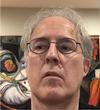Research Terms
Computer Vision Medical or Diagnostic Imaging
Keywords
Industries
IEEE, Member; 2004 - present
Often images taken with smartphones or point-and-shoot digital cameras come out noisy due to lack of sufficient lighting. This low-light noise problem is widespread, being present in all of the smartphones in the world, more than 1 billion total. This problem generates in consumers disappointment and frustration with the quality of the images taken in low light. While a number of commercial denoising packages are already available on the market, the majority of them are trained on images corrupted by artificial noise, rather than trained on real low-light noisy images. Since artificial noise has different characteristics than real noise, these packages do not perform as well as a denoising algorithm trained on images corrupted by real noise as we have created.
We have developed a fully automatic state of the art algorithm (RENOIR) for denoising smartphone and digital camera images which have low-light noise problems. The RENOIR algorithm could be either; be sold directly to the public as a standalone application or could be licensed to smartphone or digital camera manufacturers to be embedded in their devices.
The proposed invention is a system and method for training a Convolutional Neural Network (CNN) to predict a tuning parameter to be used in an existing image denoising method (called BM3D) to obtain best possible denoising results on images obtained by digital cameras in low-light conditions. The performance of the BM3D denoising algorithm varies with this tuning parameter.
In this work we present a method to predict the best parameter value for each image patch and we observe that using this prediction we obtain better results than using a fixed parameter value for all images.
There are many image denoising methods available today. However, they are trained and tested on artificial noise. According to our observations, when it comes to images corrupted by real low light noise the BM3D method works best. Our work takes the BM3D method and enhances it by predicting what its tuning parameter should be for each image patch being denoised.
This technology could be directly sold to consumers in the form of an app or embedded in a mobile phone or digital camera.












